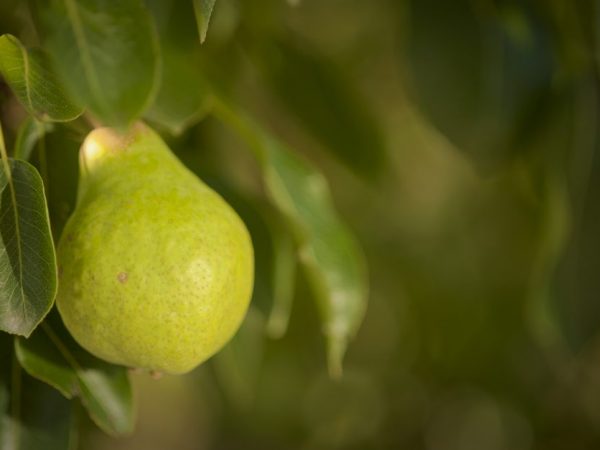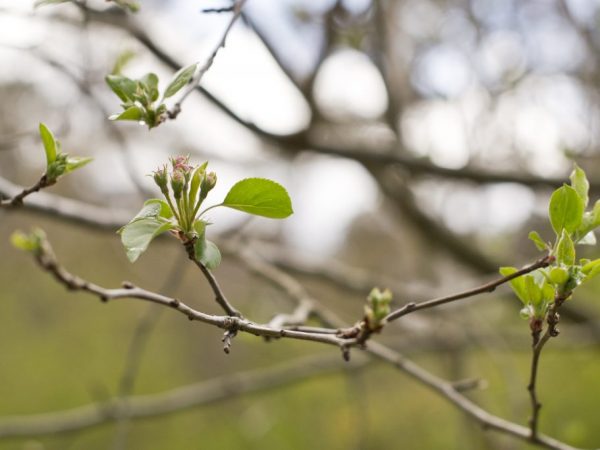Description of pear Memory Zhegalov
Pear Pamyat Zhegalov is a memorial variety that was bred in Moscow and named in honor of the breeder-geneticist S. I. Zhegalov. Plants are most widely grown in the Central region and the southern strip of our country.

Description of pear Memory Zhegalov
Characteristic
Description of the pear variety in Memory of Zhegalov should start with its features. The first of these is the absolute self-infertility of plants. To obtain a harvest, good pollinating trees are needed, which include: Marble pear, Yakovleva's Lyubimitsa and Moskovsky Bergamot.
In general, pears of the Pamyati Zhegalova variety are famous for their good yields, but only if this is accompanied by warm weather at the time of fruit set. The fact is that for pollination, the participation of insects (bees) is necessary, which do not fly out of the hives in cold weather.
The period of active fruiting for the variety begins at the end of September. The first fruits from young trees are harvested already in the third year of life. They do not overripe for a long time and survive well even on a tree. Pears are recommended to be picked a week or two before full ripening and left to ripen in a cool room.
Pears are highly transportable and have a long shelf life, so they can lie quietly until the middle of winter. Due to their excellent taste, they are used for making jams, various desserts and fruit salads, as well as dried and boiled compotes.
Description of the plant
Zhegalov's memory grows rapidly, reaching an average size (about 3 m). The crown of plants as they grow older changes shape from funnel-shaped to rounded. The color of the bark is from deep gray-green to light gray. There are many leaves on the plants, they are colored dark green, have a slight bend.
Trees delight with beautiful and abundant flowering, if there are pollinators nearby. Inflorescences are corymbose, white and medium in size (5-7 flowers each).
Description of fruits
The sizes and weight of fruits range from 120 to 200 grams. They are obovate. The color at the stage of technical maturity is green; as it ripens, it changes to lemon yellow, acquires a slight blush and slight rustiness.
The skin is shiny and smooth. The pulp is yellowish, very juicy and slightly grainy. The taste is slightly oily and pleasant, with a slight sourness, the aroma is well expressed.
Advantages and disadvantages
The benefits include:
- excellent taste of fruits;
- high productivity;
- winter hardiness;
- relative unpretentiousness to growing conditions;
- long shelf life of pears and the versatility of their use;
- resistance to the most common and dangerous diseases;
- early maturity of plants;
- high transportability and good presentation.
Landing

Pear doesn't like drafts
The first step is to choose a suitable landing site. It should be well lit by the sun and, at the same time, be protected from winds and drafts.
As for the southern and central regions, planting is preferably carried out in the fall, so that the plants get a good hardening in winter. When growing the Memory of Zhegalov in the regions of Siberia or the Urals, planting is carried out in the spring.
The planting hole is prepared in advance: in the fall before the spring planting and three weeks before the fall. The soil around it also needs to be well loosened. The pit is 65-75 cm in diameter and about a meter deep. A part of a pre-prepared mixture consisting of humus and sand (2 buckets) mixed with earth and one glass of superphosphate is placed on the bottom.
A seedling is carefully lowered into the pit and sprinkled with the second part of the mixture. It is important to ensure that the root collar is 5-7 cm higher than the soil level. A peg is driven into the soil, to which the plant is firmly fixed - it will prevent the trunk from curving.
Care
After planting the seedling, it must be watered with 3 buckets of water and mulched with peat. It must be repeated periodically, while peat can be replaced with sawdust.
Young plants do not tolerate drying out of the soil, therefore, they need weekly watering. It is enough to water mature trees 4 times per season, while mulching the soil.
Fertilizers
Both mineral and organic fertilizers are suitable as top dressing, but organic matter should be preferred. Annually, about 2 kg of manure per 1 square meter is introduced into the soil near the trunk.
It is good to apply nitrogen fertilizers in the spring, and mineral fertilizers in the fall. The former will provide good vegetative growth, and the latter will provide a supply of trace elements for the winter. During flowering, the soil is fertilized with chicken droppings (1-2 liters) or 300 g of urea.
Pruning
The main pruning is carried out before the juices begin to move, but at an air temperature above 8 degrees. Remove all excess shoots that will interfere with the plant, but their number should not exceed ¼ of the total mass. Autumn is the time of sanitary pruning, during which dry and damaged branches are removed.
The variety is winter-hardy, so there is no need to cover the plants for the winter. Another important step in the care is the regular loosening of the soil on the site, as well as the removal of all weeds that can threaten the plant with various diseases.
Possible diseases
Zhegalov's Memory Pears are not subject to various fungal diseases. But they are sometimes struck by the spotting of various types. To combat it, I use a solution of Bordeaux liquid, which is sprayed on the leaves.
Some insects are also dangerous, which include:
- fruit moth (for the prevention and control of it, plants are treated with a solution of 50 ml of Lepidocide and 10 liters of water);
- mites (treatment with a 1% solution of colloidal sulfur, dissolved in 5 liters of water);
- aphids (processing with coniferous broth);
- weevil and honeyberry (spraying with infusion of 300 g of tobacco chips mixed with 10 liters of water).
Conclusion
Due to its pliability for transportation and storage, as well as its presentation and excellent taste, the pear Pamyat Zhegalov has become indispensable for large industrial enterprises. But no less common is its cultivation in summer cottages. It is quite unpretentious in care, but pleases with a good return and taste of the fruit, moreover, it rarely gets sick, therefore it is well suited even for novice gardeners.


